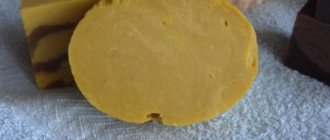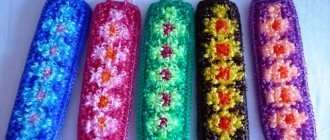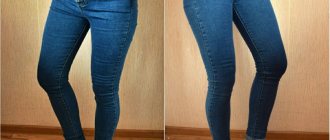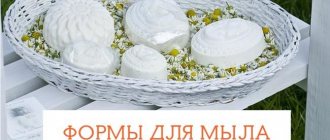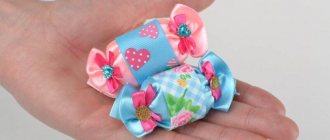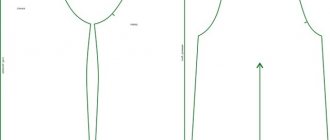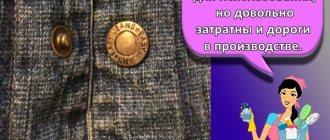Sew-on buttons are most often used as an additional fastener; they are suitable for those places where the fabric tension is not too great.
They can be sewn on the edge of clothing and always on double folded material and reinforced with a gasket.
The buttons come in different sizes and consist of two parts. The upper part of the button (with the rod) is sewn on the wrong side of the upper edge of the fastener, the lower part of the button (with the cup) is sewn on the front side of the lower edge of the fastener.
Installing buttons and rivets without a press
How to properly install an iron door in a wooden house: video
If you are smart, you can do without a press and special tools. To install the button, you will need a hammer, a bat (bolt) or even a simple needle and thread. It all depends on the type of fittings.
Sew on buttons
Does not require the use of special tools. The easiest way to attach sew-on snaps to clothing is. All you need is a sewing needle, thread to match the fabric and the buttons themselves. The more holes they have, the better.
Instructions:
- Place the metal piece with the bolt on the smooth side against the face of the bottom of the product. Sew on.
- Place the metal part with the recess on the wrong side of the top of the product. Use a needle and thread.
Ring
Perhaps the most common type of button. They are used in tailoring clothes, including jackets, as well as in the manufacture of wallets and bags. They come in different sizes and colors and are mostly made of metal.
The ring button consists of 4 parts and looks like this:
It is connected by inserting a small ring into a large one. Hence the name.
How to install a ring button without a press?
- From the inside of the bottom of the fabric, insert a metal piece with a leg (more inconspicuous in appearance).
- Place a wooden block or something hard under it.
- Cover with a piece with a narrow ring.
- Armed with a bat and hammer, carefully flatten the protruding leg. You can use a suitable size bolt.
- Take the remaining part with the leg (it is usually prettier and better built) and insert it from the front side of the top of the product.
- From the wrong side, place the part with the ring on the leg. Place it on the beam and flare it again. Ready!
In a similar way, you can install plastic ring buttons without special pliers. Only instead of flattening the legs, they should be melted. At home, a soldering iron or a hot nail is used for this.
Alpha buttons
No less popular buttons. They have a spring mechanism and a convex pin. You can see the difference between the ring (2) and “alpha” buttons (1) in the photo:
Inserting them into a jacket or other product with your own hands is more difficult. The reason for this is the pin, which can become wrinkled when flared. To prevent this from happening, you should drill a recess in a wooden block for the convex part of the button.
What to do next:
- Install the part onto the bottom of the product. To do this, take a simple rivet with a leg and thread it from the inside out. Attach the part with the bolt on the front side. Turn it over and place the convex side into the hole drilled in the block. Tap lightly with a hammer on the top (from the inside).
- Next you need to assemble the front part of the button. Insert the rivet with the leg into the hole. Install the part with the recess from the inside out. Armed with a bat (bolt, blunt nail), flatten the leg from the wrong side.
Rivets
Along with functional buttons, decorative rivets are often used in clothes: figured, with pebbles, spikes. They usually have sharp protrusions on the reverse side.
Inserting them is as easy as shelling pears:
- Pierce the fabric with the teeth.
- Press something hard against the rivet. The fabric should be taut and the rivet should fit snugly against it.
- Fold the teeth from the inside out. The easiest way to do this is with a flat screwdriver.
There are also rivets used to secure fabric stitching. Holnitens are often used in products made from denim and leather. This is what they look like:
Installation of this type of rivets is quite simple. The main thing is that the length of the leg matches the thickness of the fabric.
- Insert the part with the leg into the hole from the wrong side.
- Cover with a cap and place face down on a wooden surface.
- Lightly tap the rivet from the inside out with a hammer.
The buttons are inserted into jeans in the same way. The only difficulty is preserving the front part. To prevent it from being wrinkled or scratched, the rivet is hammered in from the inside out, and a rubber or leather gasket is placed under the front side.
Now you know how to install buttons yourself. Home renovations will save you time and money. If you doubt your abilities, try practicing on an unnecessary piece of fabric. You will succeed!
Popular master classes by Valery.
DIY pendant made of wire and stone. Master Class.
How to make a cone for a Christmas tree out of paper with your own hands.
Paracord bracelet for beginners.
Rivet installation process
It is necessary to work with tools carefully, slowly and without making sudden movements. Otherwise, the fabric, accessories or tools may be damaged. The most common type of installation of accessories is the installation of a block on clothing. In workshops and ateliers, forceps are used for this procedure. However, such a tool must be purchased of good quality so that the handles do not bend and the “cheeks” do not move.
Don’t despair if you don’t have special forceps at hand; you can do without them at home. Use the following step-by-step instructions:
- Use a punch to make a hole of the required diameter in textile material or leather.
- Thread the block leg and put a ring on it.
- Place the piece of clothing with the block on the anvil.
- Use a punch to split the stem of the block into petals. If all the steps are done correctly, the petals should bend on their own on the block ring.
- Lightly go over the block with a hammer to finally secure it to the fabric.
When working, place the ring with the convex side away from you so that it repeats the convex shape of the edge of the block.
Replacing buttons on a jacket with your own hands
To correctly and quickly install a new rivet or remove an old one, you need skill and dexterity. In order to improve the quality of work and make it as thorough as possible, you need to purchase a set of special tools. Any technological manipulation requires maximum accuracy and attentiveness, otherwise everything will go down the drain. If the old fittings are no longer useful in the future, then you can simply “cut off” the head of the rivet with a hammer or knife, placing the fittings in the same way as described earlier.
Options for attaching to clothing
In principle, buttons of any type and material perform one function. But to secure fasteners on things, two fastening options are used.
Sew-on method
Suitable for installation of two-piece fastener. They are sewn by hand in such a way that the seams are invisible from the front side of the items. Moreover, the top element of the button is installed first, and then the bottom one. Both metal and plastic products are used to decorate clothing:
- plastic components do not guarantee strong fixation and therefore are most often used as an auxiliary element. As a rule, they are very popular when decorating children's clothing. Also attached to the corners of the collars of men's shirts, to the straps under the fastener;
- metal sew-on buttons are used as fasteners for outerwear. For a fashionable wardrobe design, you can cover the buttons with fabric. If you choose textiles of the appropriate shade, then metal fasteners will be invisible on things.
Installation of punch buttons
Widely used for sewing sportswear, outerwear, and denim products. The button set consists of two upper and two lower parts
During installation, it is important not to confuse: the “lid” of the fastener is located on the front side of the upper fabric of the item, and the “leg” is located on the back. And accordingly place the remaining two elements of the button on the bottom field of clothing
Before installing the fasteners, special holes are first made in the fabric. We must try to ensure that the diameters of the hole in the material and the leg of the button match or the hole is slightly smaller. The parts are secured with a special tool, which can be purchased separately or in a set with fasteners. The equipment is equipped with a special press matrix and special attachments - punches (of different diameters). At home, when installing buttons, craftsmen use an ordinary hammer, a Phillips screwdriver or dowel, a wooden block, pliers, or a knitting needle.
Types of accessories
Accessories for clothing are:
- Hooks.
- Buttons.
- Blocks.
- Lightning.
- Loops.
- Buckles.
- Rivets – utilitarian and decorative.
- Eyelets – plastic or metal.
- Holniten - metal rivets on denim clothing.
- Textile Velcro fasteners.
Important! The service life of the fittings and its quality are determined by the material from which it is made. The main purpose of the accessories is decorative, because thanks to them the clothes should be more elegant and elegant.
At the moment, most fasteners and fasteners are made from the following materials:
- Plastic.
- Metal.
- Ceramics.
- A combination of several materials - in this way you can combine beautiful appearance and practicality.
Important! If the fittings are not chosen correctly, for example, the type of fabric was not taken into account, then it will not cope with its functional task, will quickly fail and will need to be replaced.
Varieties
Clothes buttons differ in the material they are made of:
- metal;
- plastic.
According to the method of fastening they can be:
- installation - secured using special tools;
- sewn - to attach them you need a thread and a needle.
Depending on their form, purpose and application, they are divided into:
- simple;
- s-shaped;
- shirts;
- magnetic;
- clasp;
- holsters;
- straps;
- tablet
O-shaped
The most common type of buttons is o-shaped. They are called simple, ring or flight, because the fastener first appeared on jackets and overalls of pilots. The design is not complicated and consists of two metal parts that fit tightly into one another. The upper component has a spring fastening.
Simple buttons are used both on different types of everyday clothing and on specialized textiles.
S-shaped
This type is of the spring type. One of the parts resembles the letter “S”, which is why they are called s-shaped. Depending on the size they are divided into several types:
- uniform - the size of the top ranges from 27 to 40 mm;
- article - half the size of the uniform;
- anorak - compact size;
- mini anorak - the upper part is less than 8 mm.
The shape of the top is varied - from flat and round to diamond-shaped, square, drop-shaped. They are fixed by sewing or fastening. The large spring allows it to withstand heavy loads.
Shirt
Shirt-type buttons differ from regular ones in the way they are fastened - not with a single pin, but thanks to 6-8 spikes. The design allows fastening fasteners on fabrics of light density. They are suitable for children's clothes, knitwear and knitted clothes, light summer jackets.
The devices are convenient to use, but quite expensive to manufacture. During installation, the material is pierced with spikes located on the ring. Their diameter varies from 9.5 mm to 40 mm. The largest ones are used on jackets.
Magnetic
Self-fastening magnetic fasteners are most often used in household products - bags, outerwear, wallets. They are convenient to use, but they are expensive to produce. The connection strength thanks to the magnet is high, and it is very easy to unfasten even with one hand. The magnetic button device includes four parts - two bases and the same number of mounting flanges. The magnet allows you to automatically select the position and close. The larger the fastener size, the greater the connection force.
Koburnaya
This type has another name - tablet. They have been produced since the times of the USSR, when they were necessary for fastening military haberdashery. The lower part of the structure is very similar to the part of the s-shaped device. The top of the lock is hollow inside, petal-shaped. Its size is 12 mm. When the button is fastened, it expands and contracts. Most often, the fasteners are nickel-plated, but they can have two more color variations - black and brown.


